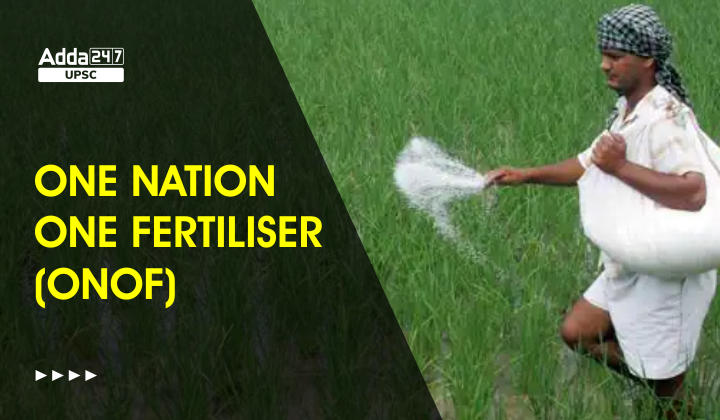Table of Contents
One Nation One Fertilizer Scheme- Relevance for UPSC Exam
General Studies III- Effects of Liberalization on The Economy, Changes In Industrial Policy and their effects on Industrial Growth.
In News
The Ministry of Chemicals and Fertilizers will implement One Nation One Fertilizer (ONOF) by introducing a Single Brand for Fertilizers and Logo under the fertilizer subsidy scheme named “Pradhanmantri Bhartiya Janurvarak Pariyojna” (PMBJP).
One Nation One Fertilizer (ONOF)
- The single brand name for UREA, DAP, MOP and NPK etc. would be BHARAT UREA, BHARAT DAP, BHARAT MOP and BHARAT NPK etc. respectively for all Fertilizer Companies, State Trading Entities (STEs) and Fertilizer Marketing Entities (FMEs).
- Also, a logo indicating Fertilizer subsidy scheme namely Pradhanmantri Bhartiya Janurvarak Pariyojna will be used on the fertilizer bags.
- Under the scheme, companies are allowed to display their name, brand, logo and other relevant product information only on one-third space of their bags.
- On the remaining two-thirds space, the “Bharat” brand and Pradhanmantri Bharatiya Jan Urvarak Pariyojana logo will have to be shown.
What is the government’s argument for introducing this scheme?
The government’s logic for introducing a single ‘Bharat’ brand for all subsidized fertilizers +being marketed by companies is as follows:
- The maximum retail price of urea is currently fixed by the government, which compensates companies for the higher cost of manufacturing or imports incurred by them.
- The MRPs of non-urea fertilizers are, on paper, decontrolled.
- But companies cannot avail subsidy if they sell at MRPs higher than that informally indicated by the government.
- Simply put, there are some 26 fertilizers (inclusive of urea), on which government bears subsidy and also effectively decides the MRPs.
- Apart from subsidizing and deciding at what price companies can sell, the government also decides where they can sell.
- This is done through the Fertilizer (Movement) Control Order, 1973.
- Under this, the department of fertilizers draws an agreed monthly supply plan on all subsidized fertilizers in consultation with manufacturers and importers.
- This supply plan is issued before the 25th of each month for the following month, with the department also regularly monitoring movement to ensure fertilizer availability as per requirement, including remote areas.
- The government is spending vast sums of money on fertiliser subsidy (the bill is likely to cross Rs 200,000 crore in 2022-23).
- By deciding where and at what price companies can sell, it would obviously want to take credit and send that message to farmers.
Possible drawbacks of the scheme
- It may disincentivize fertilizer companies from undertaking marketing and brand promotion activities.
- They will now be reduced to contract manufacturers and importers for the government. Any company’s strength ultimately is its brands and farmer trust built over decades.
- Currently, in case of any bag or batch of fertilizers not meeting the required standards, the blame is put on the company. But now, that may be passed on fully to the government.
- Politically, the scheme might well boomerang rather than benefit the ruling party.




 TSPSC Group 1 Question Paper 2024, Downl...
TSPSC Group 1 Question Paper 2024, Downl...
 TSPSC Group 1 Answer key 2024 Out, Downl...
TSPSC Group 1 Answer key 2024 Out, Downl...
 UPSC Prelims 2024 Question Paper, Downlo...
UPSC Prelims 2024 Question Paper, Downlo...
